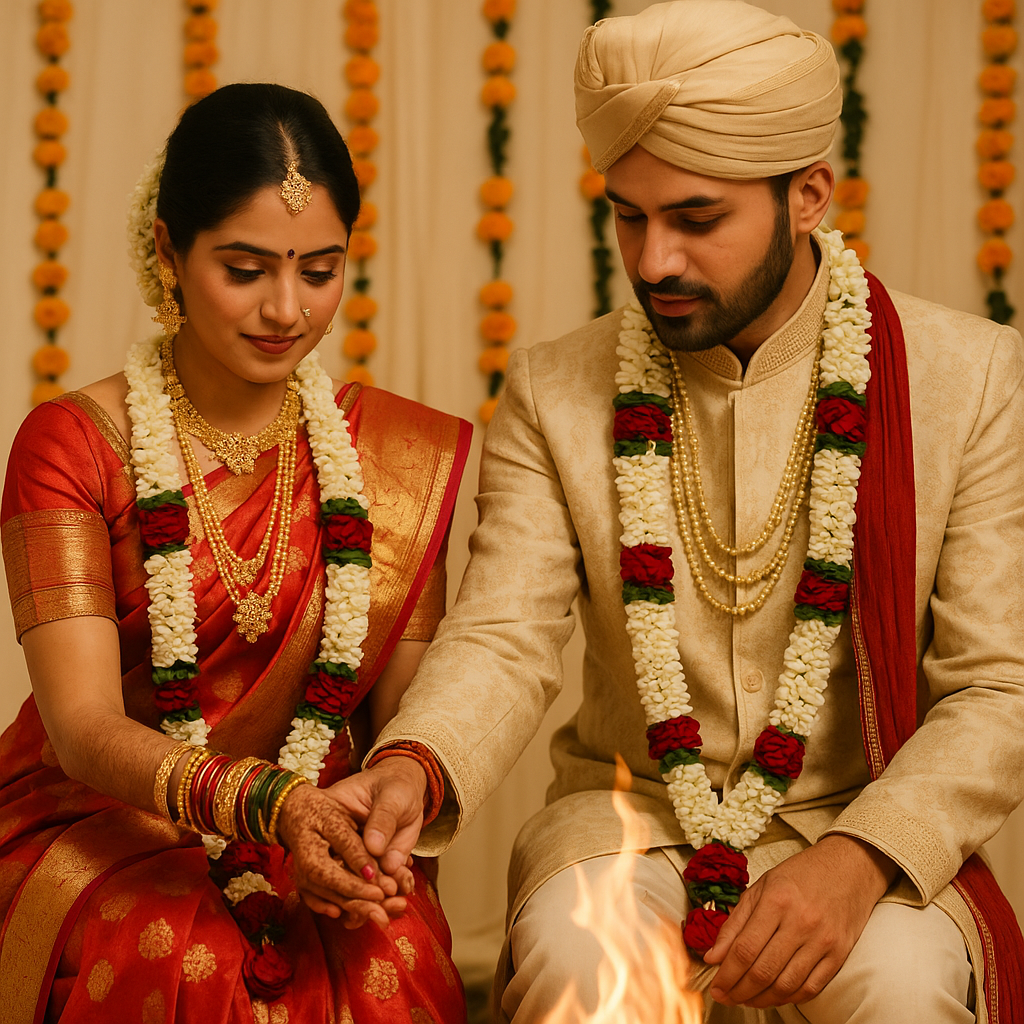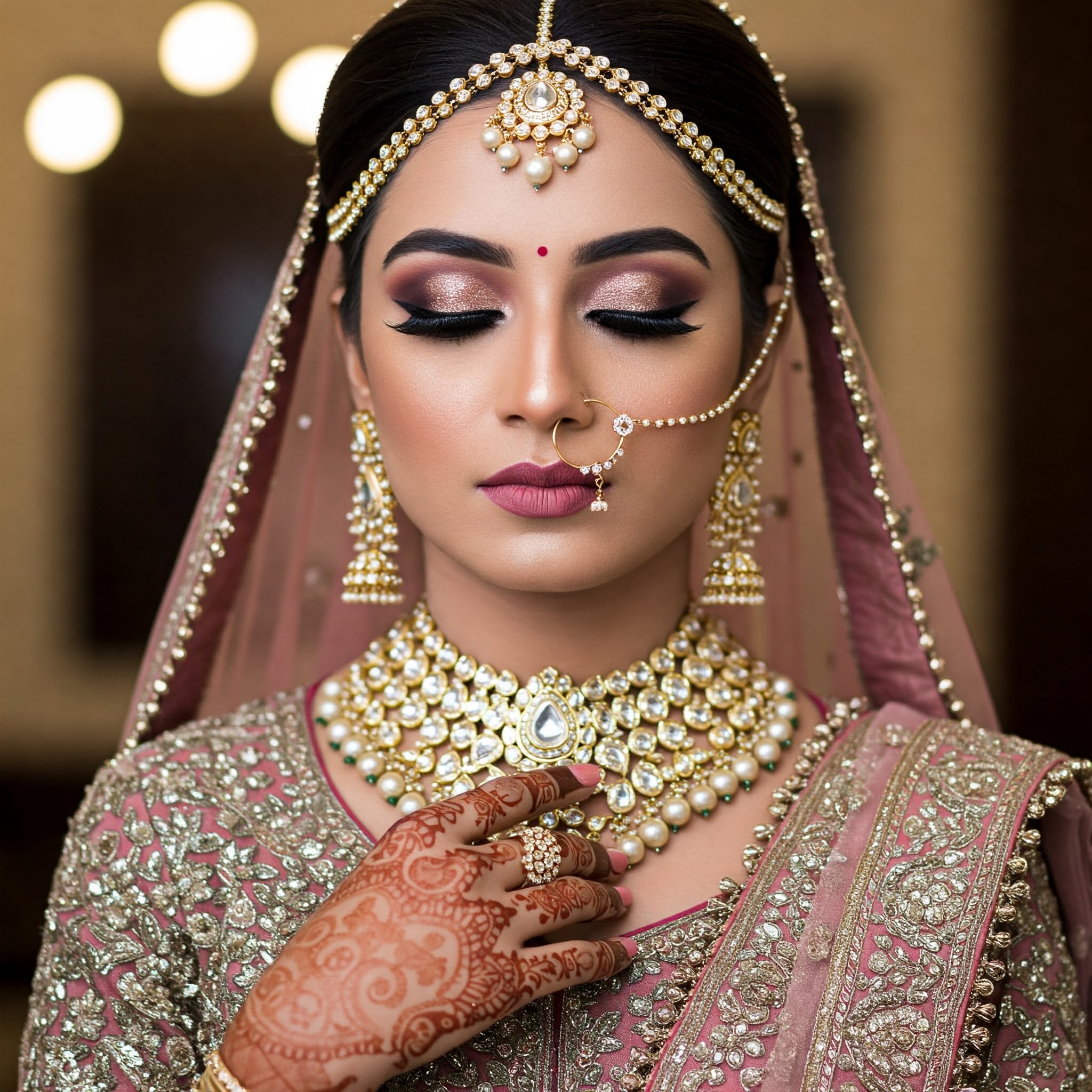
Essential Rituals Every Hindu Couple Should Know Before Their Big Day
31-May-2025 DigiShaadi
Introduction: Why Ritual Awareness Matters in Hindu Matrimony
Marriage in Hindu culture is not just a social event — it’s a sacred rite, known as Vivaha Sanskar, that symbolises the union of two souls and their families. In the digital age, where many matches are made through online matrimony for Hindus, prospective brides and grooms often find themselves navigating both modern conversations and traditional expectations.
Whether you’re speaking to a potential partner on a matrimony platform or preparing for your big day, knowing key Hindu wedding rituals can enhance your confidence, show your respect for tradition, and foster deeper compatibility.
In this guide, we’ll walk you through the most essential Hindu wedding rituals that every couple should know and be able to discuss before the wedding bells ring.
1. Vivaah Sanskar: The Foundation of Hindu Marriage
Before diving into individual rituals, it’s important to understand that marriage is one of the 16 Sanskars (life rites) in Hinduism. The concept of Vivaha is rooted in Dharma, where the marriage is seen not just as a bond between individuals but as a sacred duty toward society and spirituality.
Many who use online matchmaking platforms—especially younger or global Hindus—may feel disconnected from these customs. That’s why a basic understanding becomes essential for online matrimony ritual prep.
2. Kanyadaan: The Giving Away of the Bride
Significance: One of the most revered Hindu wedding rituals, Kanyadaan symbolises the parents of the bride giving her away to the groom. It’s a moment of deep emotional and spiritual value, where the father entrusts the groom with the responsibility of his daughter.
Modern Relevance: Many urban couples are now choosing to make Kanyadaan more inclusive by involving both parents or even choosing a mutual "Swa-Daan" (self-giving), especially in inter-caste or inter-regional marriages.
Discussion Tip: While chatting with a match, ask, “Is Kanyadaan something important to your family?” This can reveal values, gender perspectives, and how traditional or progressive a family is.
3. Saptapadi: The Seven Sacred Steps
Significance: The Saptapadi, or "Seven Steps", is arguably the most important part of a Hindu wedding. The couple takes seven steps around the holy fire (Agni) and makes vows for each step.
The Seven Vows Represent:
Nourishment and food
Strength
Prosperity
Family
Progeny
Health
Friendship and loyalty
Why It Matters: These vows shape the ethical and spiritual foundation of the marriage. Discussing these can be a meaningful way to talk about shared goals during the matchmaking process.
Online Tip: Include a mention of the values you admire from the Saptapadi in your matrimony profile. This works well with tips from How to Craft a Standout Hindu Matrimony Profile.
4. Mangal Pheras: Circling the Sacred Fire
Significance: Similar to Saptapadi, in many North Indian weddings the couple takes four to seven pheras around the fire while priests chant Vedic mantras. Each phera has a symbolic meaning related to aspects of life and marital duty.
Discussion Tip: Some communities combine Pheras with Saptapadi, while others treat them as separate. Ask your prospective match, “How does your family perform pheras?” This opens a respectful cultural exchange.
5. Mangalsutra & Sindoor: Symbols of Married Life
Mangalsutra: A sacred necklace tied by the groom around the bride’s neck, symbolising their union. It’s commonly made of black beads and gold.
Sindoor (Vermilion): Applied by the groom in the parting of the bride’s hair, this signifies her new status as a married woman.
Cultural Variations:
In South India, the Mangalsutra is called Thaali or Mangalyam.
-
In some Bengali weddings, the focus is more on Shankha Pola (white and red bangles).
Modern Viewpoint: Some couples now opt for alternative symbols or choose to skip this altogether. Make sure to talk about this if your values differ from traditional expectations.
6. Haldi Ceremony: The Ritual of Purification
Timing: Held a day or two before the wedding.
Ritual: A turmeric paste is applied to the bride and groom’s bodies. This ritual is meant to purify, beautify, and bless the couple with prosperity and glowing skin.
Fun Fact: It’s one of the most light-hearted and fun pre-wedding events, often accompanied by music, teasing, and laughter.
Compatibility Note: If your match is enthusiastic about tradition, they may already look forward to this. If they prefer minimalism, they might want a smaller, symbolic version.
7. Mehendi: Adorning the Bride
Significance: Intricate henna designs are applied on the bride’s hands and feet. It's believed the darker the henna, the deeper the groom’s love.
Modern Trends: Mehendi nights have become popular even among NRIs, combining tradition with entertainment.
Tip for Matches: Ask, “What’s your take on Mehendi functions?” to explore how traditional or modern their wedding vision is.
8. Baraat: The Groom’s Procession
Ritual: The groom arrives at the wedding venue with a lively procession—often on a horse, with music, family dancing, and excitement.
Regional Variations:
In North India, the Baraat is extravagant.
-
In Tamil or Kerala weddings, the groom's arrival is quieter, often involving a welcome ceremony called Mapillai Azhaippu.
Online Matching Insight: Families from different states may have different expectations around this, especially in intercultural marriages. Discussing this early avoids surprises later.
9. Jaimala/Varmala: Exchange of Garlands
Symbolism: The bride and groom exchange floral garlands, indicating mutual acceptance.
Evolution: This is now a popular photo-op moment but still retains cultural weight.
Spiritual Meaning: It symbolises respect and equality between the couple.
Cultural Tip: In South Indian weddings, this might be done multiple times during different ceremonies like Maalai Maatral.
10. Bidaai: The Emotional Departure
Significance: The bride says farewell to her family and leaves for the groom’s home.
Modern Adjustment: In love marriages or intercultural unions, Bidaai can be redefined as a symbolic transition, often accompanied by both families.
Conversation Prompt: Ask your match how their family views Bidaai. It’s often emotional and can highlight familial expectations and attachments.
11. Grihapravesh: Bride’s Welcome into New Home
Ritual: The bride steps into her new home, often pushing over a pot of rice, symbolising prosperity entering the household.
Contemporary Context: In many modern homes, both bride and groom are welcomed, emphasising equality.
Why These Rituals Matter During Online Matchmaking
When you’re meeting someone via online matrimony for Hindus, rituals become more than symbolic acts — they serve as talking points for compatibility. For instance:
Are they deeply rooted in tradition?
-
Do they expect you to follow all rituals?
-
Are they open to customising ceremonies?
-
How involved is their family in religious matters?
Discussing rituals early helps avoid misunderstandings and builds mutual respect.
Tips for Online Matrimony Rituals Prep
Mention your comfort level with rituals in your profile.
Example: “Open to traditional rituals with a modern touch.”
Use rituals to spark meaningful conversations.
“What part of the wedding are you most excited about?”
Clarify non-negotiables.
If you strongly prefer or avoid certain customs (e.g., Kanyadaan, dowry-related rituals), be clear early on.
Use platform filters wisely.
Many platforms, like DigiShaadi, let you filter by community or region. Understanding rituals helps you choose more informed matches.
Respect differences.
If someone’s rituals differ, don’t mock or dismiss — instead, ask why it’s important to them.
Ritual Preferences Across Hindu Communities
Different communities on matrimony sites have unique ritual expectations. Check out our post on Top 10 Hindu Communities on Matrimony Sites to understand community-specific customs like:
-
Tamilians prefer early-morning temple weddings.
-
Bengalis use items like Shubho Drishti and Topor.
-
Gujarati weddings often have vibrant Garba and Mandap Mahurat ceremonies.
Understanding these details helps when you're matched with someone from a different cultural background.
Conclusion: Know Your Roots, Match with Confidence
A wedding isn’t just a day of celebration — it’s a cultural experience deeply embedded in history, family, and faith. For modern couples meeting on matrimony platforms, knowing Hindu wedding rituals isn’t about blind tradition. It’s about being prepared, respectful, and intentional.
Whether you’re traditional, modern, or somewhere in between, understanding key rituals like Saptapadi, Kanyadaan, and Mangalsutra helps you match more confidently, communicate more meaningfully, and ultimately marry with awareness and joy.
Related Reads:




